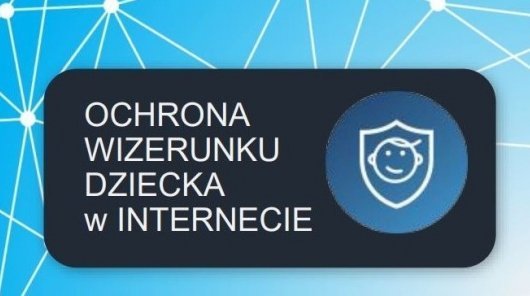
Let’s pay more attention to the image of children on the internet
Every day, millions of photos containing images of children are uploaded to the internet. Both those who post such content and those who give consent for the publication of children's photographs often do not realise the potential consequences of having this type of data online.
As the President of the Personal Data Protection Office, Mirosław Wróblewski, reminds us, “an image is personal data and a personal right. When it comes to children, it is especially important to exercise caution when processing and disseminating image. Adults should be aware not only of the regulations but also of the possible negative consequences of publishing such material online, in order to better protect children.”
“This is not just a legal issue, but also an ethical one,” adds the President of the Personal Data Protection Office.
In public discourse, there are growing concerns and questions about the scope of consent regarding the processing of minors' images. Parents and guardians often do not understand that the terms and conditions of events — such as sports competitions — frequently include consent requests for the use of image, written in very broad terms. These consents often make participation in the event conditional on granting image rights, and organisers of events involving minors claim the right to use their images in any way they choose, with almost no limitations. Regulations sometimes include clauses like a “license to use photos” for promotional purposes, which involves large-scale image processing (e.g., by event sponsors, not just the organiser), without territorial or time restrictions. This can lead to various dangerous consequences for minors. Such licenses may also allow the use of the image in different contexts, alongside comments or other materials, such as videos, which can then be freely edited. At any stage of this processing, the organiser is not required to ask the parents or guardians for consent regarding the final product in which the child’s image appears.
The problem is that information about the required consents is often hidden in attachments to the regulations, which unfortunately are not read by parents or guardians. Nonetheless, agreeing to a child's participation in an event should not be equated with consenting to the processing of their image. In practice, however, these two issues are often linked — typically for the convenience of the organiser, who rarely consults their procedures with, for example, a data protection officer.
A potential solution in such cases may be for the parent or guardian to give the required consent (i.e., accept image processing as a condition of participation), and then shortly afterward withdraw that consent — something permitted under the GDPR. This should not result in the child being excluded from the event. Parents and guardians are often unaware that in such situations, the GDPR is the most important point of reference.
The Personal Data Protection Office consistently emphasises that publishing images of minors can have very negative consequences — it can fuel hate speech, cyberbullying, the creation of mocking memes, harmful deepfakes, or digital identity theft. In extreme cases, such content may even end up on forums frequented by individuals with pedophilic tendencies. Sometimes, this kind of material clearly violates a child’s dignity or their relationships with adults.
That’s why we once again encourage everyone to read the guide created jointly by the Personal Data Protection Office and the Orange Foundation, entitled "Children's image on the Internet. To publish or not to publish?" It was developed primarily for individuals working in organisations and institutions responsible for the welfare and safety of children. Many of its insights will also be useful for the media and private individuals. The guide explains the legal protection afforded to images, how to correctly formulate consent for dissemination, and debunks the most common myths. It also includes a list of potential risks associated with publishing children's images online.
The guide is available below.
In October 2025, a conference titled "Safe Data of Children and Youth and New Directions of Development in Physical Culture. How to Meet Contemporary Challenges?" will take place. Topics will include issues such as consent for processing the personal data of young athletes, sharing their images, and the use of artificial intelligence in sports.



